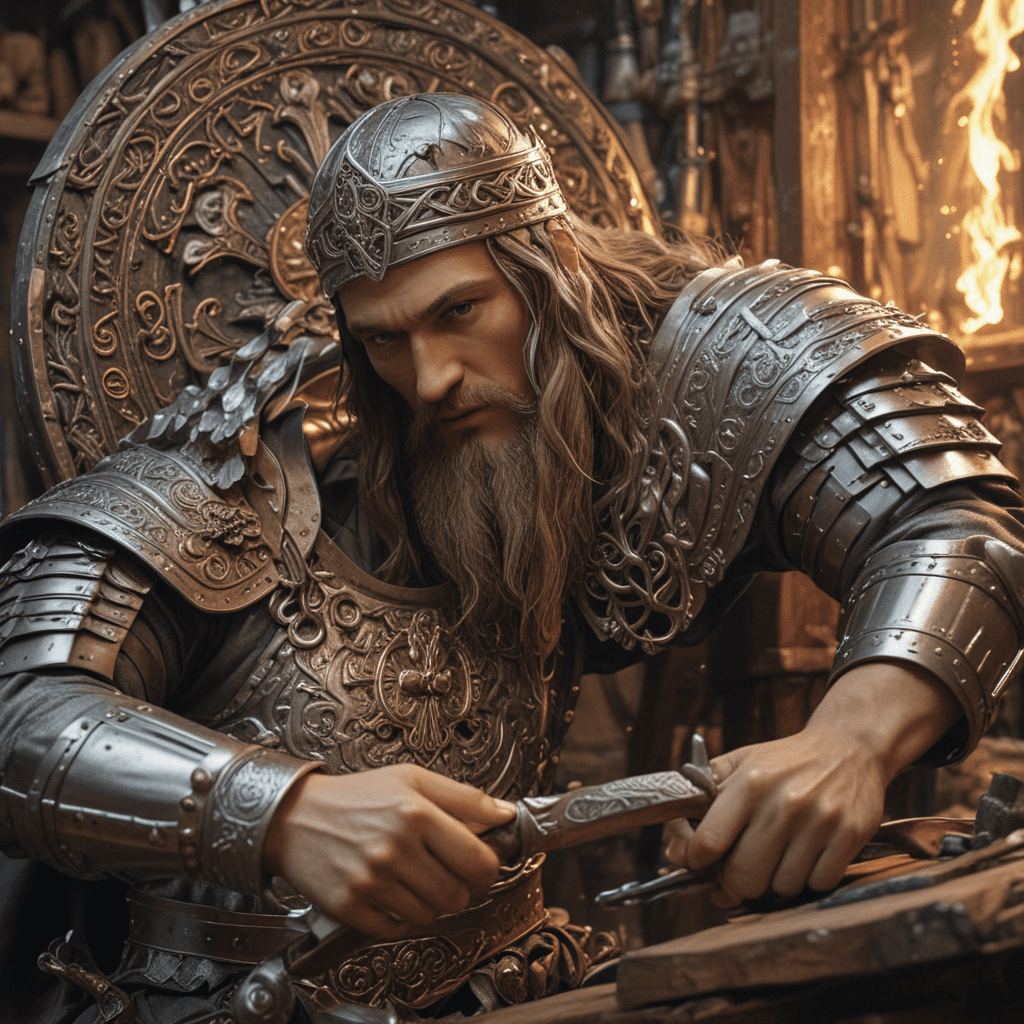Slavic Mythology: The Art of Metalworking and Smithing
I. Introduction
In Slavic mythology, the art of metalworking and smithing held a profound significance, deeply intertwined with the divine realm and the beliefs of the Slavic people. Metalworking was not merely a craft but a sacred practice imbued with spiritual and cultural importance.
II. The Role of Svarog in Metalworking
Svarog, the supreme god of the Slavic pantheon, played a pivotal role in metalworking. He was the patron of smiths and craftsmen, the celestial blacksmith who forged the world from chaos. Svarog's forge was said to be located in the heavens, where he created the sun, moon, and stars. He taught humanity the art of metalworking and provided them with the tools and knowledge necessary to craft tools, weapons, and other objects of metal.
III. Veles and the Acquisition of Metalworking Techniques
Veles, the Slavic god of the underworld and cattle, also had a role in metalworking. He was said to have acquired the techniques of metalworking from the dwarves, who possessed extraordinary skills in crafting and mining. Veles shared this knowledge with humans, enabling them to harness the power of metal and create objects of great value and usefulness.
IV. The Sacredness of Metalworking
Metalworking was considered a sacred craft in Slavic culture. Smiths were held in high esteem, as they possessed the ability to transform raw materials into objects of practical and aesthetic beauty. The process of metalworking was believed to be imbued with magical and spiritual significance, and smiths were often consulted for their wisdom and guidance.
V. The Importance of Metal Objects in Slavic Culture
Metal objects held great importance in Slavic culture. Tools, weapons, armor, and jewelry made of metal were not only practical but also symbolic. Metal objects were often adorned with intricate designs and motifs that carried cultural and religious significance. The possession of metal objects was a sign of wealth, status, and prestige within Slavic society.
VI. The Use of Metal in Slavic Weapons and Armor
Metal was extensively used in the creation of Slavic weapons and armor. Swords, spears, axes, and shields were forged from iron and steel, providing warriors with essential tools for combat. Metal armor, such as chainmail and plate armor, offered protection against enemy attacks. The quality of Slavic metalworking was renowned throughout Europe, and Slavic weapons and armor were highly valued by both allies and adversaries.
VII. Metalworking in Slavic Folk Tales and Legends
Metalworking features prominently in Slavic folk tales and legends. The tale of "The Smith and the Devil" tells the story of a blacksmith who outsmarts the devil and acquires extraordinary smithing skills. In another legend, the hero Ilya Muromets gains his superhuman strength by drinking a magic potion forged by a blacksmith. Metalworking is often depicted as a magical craft capable of creating objects with wondrous or even supernatural properties.
VIII. The Connection between Metalworking and Other Crafts
Metalworking was closely connected to other crafts in Slavic culture. Smiths often collaborated with woodworkers to create tools and furniture with metal components. Metalworking techniques were also applied to jewelry making, producing intricate ornaments and symbolic pendants. The integration of metalworking with other crafts allowed Slavic artisans to create a vast array of practical and aesthetically pleasing objects.
IX. The Slavic Metalworking Tradition Today
The Slavic metalworking tradition continues to thrive today in various forms. Traditional metalworking techniques are still practiced by artisans who create handmade tools, jewelry, and decorative objects. Contemporary artists have also incorporated Slavic metalworking elements into their creations, blending traditional motifs with modern designs. The legacy of Slavic metalworking remains a source of inspiration and cultural pride.
X. Conclusion
The art of metalworking and smithing held profound significance in Slavic mythology and culture. Svarog, the supreme god, was the patron of smiths, while Veles played a role in acquiring metalworking techniques. Metalworking was considered a sacred craft, and metal objects held great importance, both practically and symbolically. Slavic metalworking was renowned for its quality and played a vital role in the creation of weapons, armor, tools, and other objects. Today, the Slavic metalworking tradition continues to inspire artisans and contribute to the rich cultural heritage of the Slavic people.
Frequently Asked Questions (FAQ)
Who was the Slavic god of metalworking?
Svarog
How did the Slavs acquire metalworking techniques?
From Veles, who learned from the dwarves
What was the significance of metal objects in Slavic culture?
They represented wealth, status, and prestige
Were Slavic weapons and armor of good quality?
Yes, they were renowned throughout Europe
Does the Slavic metalworking tradition still exist today?
Yes, it continues through traditional artisans and contemporary artists



